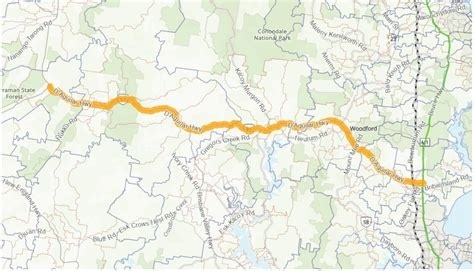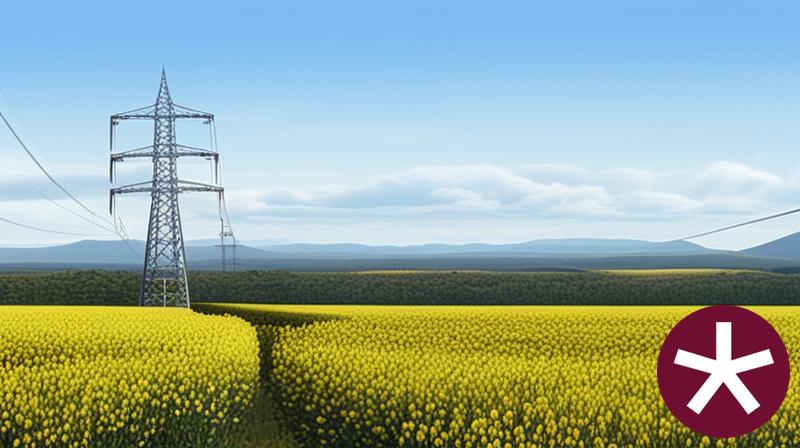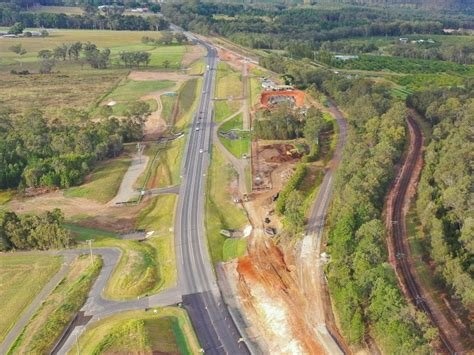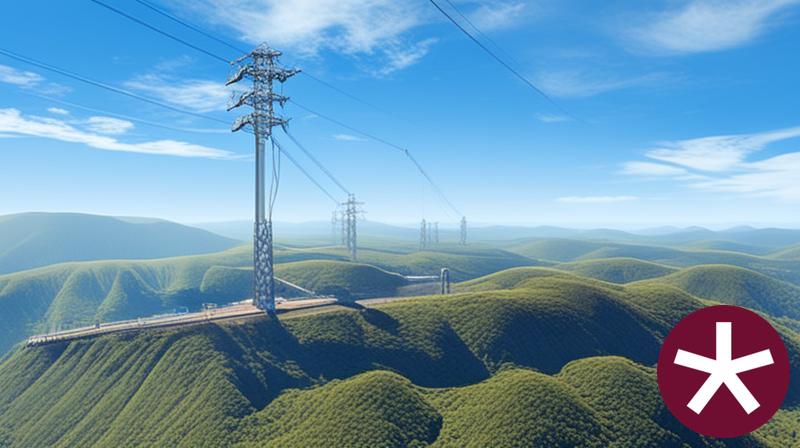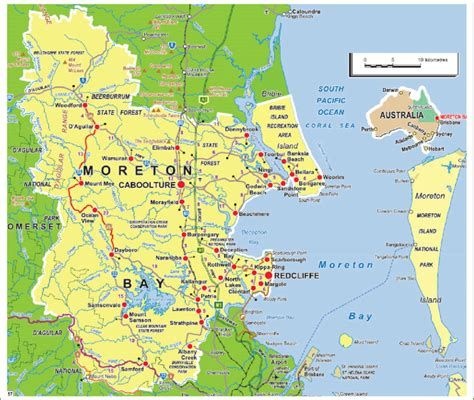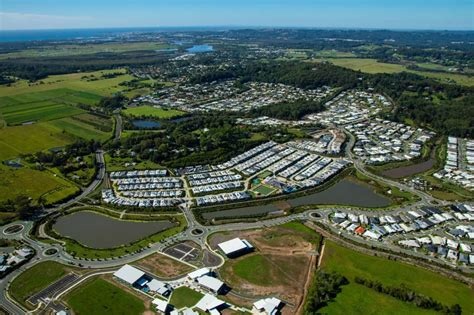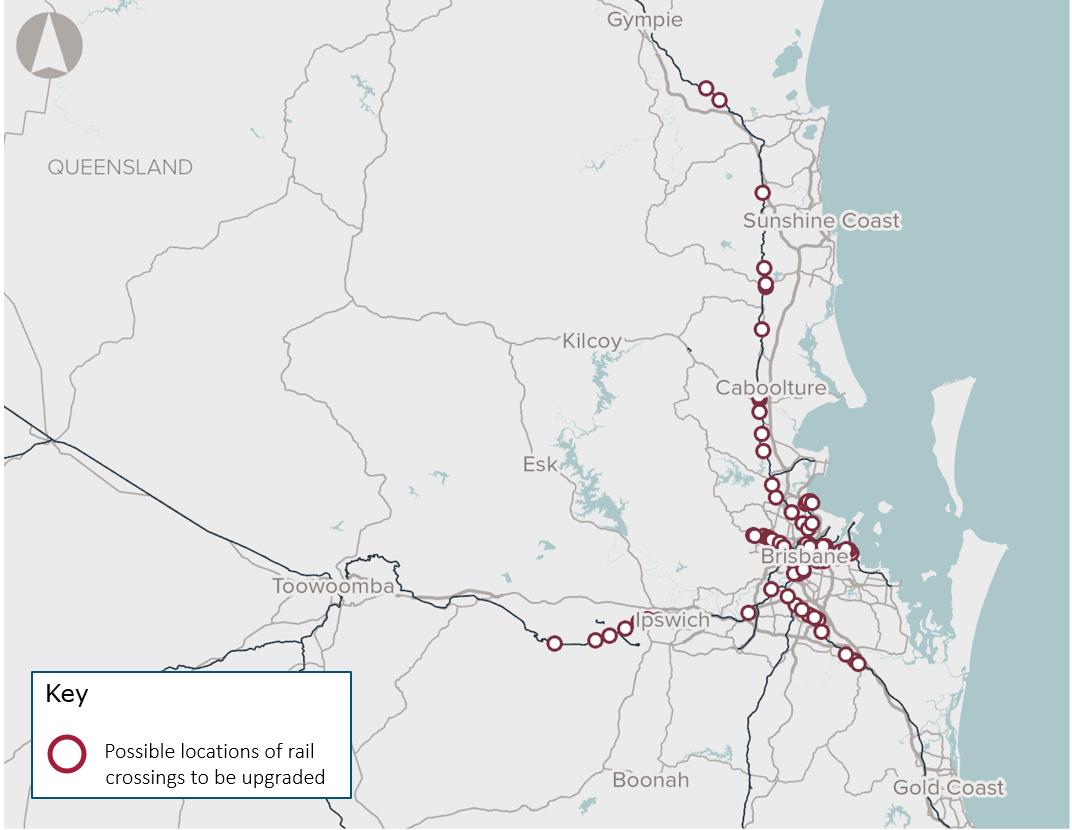Chart Color Schemes
est. as @ -- *
ABS ERP | -- people | --
2021 Census | -- people
Sales Activity
Curious about local property values? Filter the chart to assess the volume and appreciation (including resales) trends and regional comparisons, or scroll to the map below view this information at an individual property level.
Find a Recent Sale
Sales Detail
Population
Kilcoy lies within the top quartile of areas nationally for population growth performance according to AreaSearch analysis of recent, and medium to long-term trends
Kilcoy's population is approximately 6,269 as of August 2025. Between the 2021 Census and this date, the population increased by 470 people, representing an 8.1% growth. The 2021 Census recorded a population of 5,799. This increase is inferred from the estimated resident population of 6,107 in June 2024 and the addition of 202 validated new addresses since the Census date. Kilcoy's population density is around 2.2 persons per square kilometer. The town's population growth rate of 8.1% since the census is close to the national average of 8.6%.
Overseas migration contributed approximately 94.8% of overall population gains during recent periods, with interstate migration and natural growth also being positive factors. AreaSearch uses ABS/Geoscience Australia projections for each SA2 area, released in 2024 with a base year of 2022. For areas not covered by this data and years post-2032, Queensland State Government's SA2 area projections from 2023 based on 2021 data are adopted. These state projections do not provide age category splits, so AreaSearch applies proportional growth weightings in line with ABS Greater Capital Region projections released in 2023 and based on 2022 data for each age cohort. Future population trends suggest an above median growth for statistical areas across the nation. By 2041, Kilcoy's population is projected to increase by 1,170 persons, representing a 16.1% total increase over the 17-year period.
Frequently Asked Questions - Population
Development
Recent residential development output has been above average within Kilcoy when compared nationally
Kilcoy has averaged approximately 33 new dwelling approvals per year. Development approval data is produced by the Australian Bureau of Statistics on a financial year basis, showing 169 homes over the past five financial years from FY20 to FY25, and 19 so far in FY26. On average, 1.4 people have moved to the area annually for each dwelling built between FY20 and FY25, indicating a balance between supply and demand with stable market conditions. New properties are constructed at an average expected cost of $342,000, which is below regional levels, suggesting more affordable housing options for buyers.
There have been $26.8 million in commercial approvals this financial year, demonstrating moderate commercial development activity. Compared to Greater Brisbane, Kilcoy records around 65% of the building activity per person and ranks among the 84th percentile of areas assessed nationally. Recent construction consists of approximately 98.0% detached houses and 2.0% townhouses or apartments, maintaining the area's traditional low-density character with a focus on family homes.
The location has around 116 people per dwelling approval, suggesting an expanding market. Projections indicate Kilcoy is expected to grow by 1,008 residents through to 2041. Current development appears well-matched to future needs, supporting steady market conditions without significant price pressure.
Frequently Asked Questions - Development
Infrastructure
Kilcoy has moderate levels of nearby infrastructure activity, ranking in the 46thth percentile nationally
Changes to local infrastructure significantly influence an area's performance. AreaSearch has identified 13 projects likely to impact the area. Key projects include Waraba (Caboolture West) New Regional City, Queensland Supergrid South, Borumba Pumped Hydro Project, and D'Aguilar Highway Safety Improvements. The following list details those most relevant.
Professional plan users can use the search below to filter and access additional projects.
INFRASTRUCTURE SEARCH
Frequently Asked Questions - Infrastructure
UnityWater Infrastructure Program 2023-2027
Major water infrastructure program including treatment plants, pipeline upgrades, and water security projects. Covers Sunshine Coast and Moreton Bay regions to support population growth and improve water supply resilience.
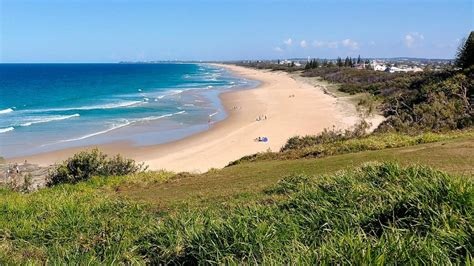
Queensland Energy and Jobs Plan
$62 billion plan to deliver Queensland's 'SuperGrid' and renewable energy targets: 50% by 2030, 70% by 2032, 80% by 2035. Includes massive infrastructure investment in renewable energy generation, transmission, solar farms, wind projects, battery storage, and partnerships with private sector. Supports economic growth, job creation, and transition to net-zero emissions.
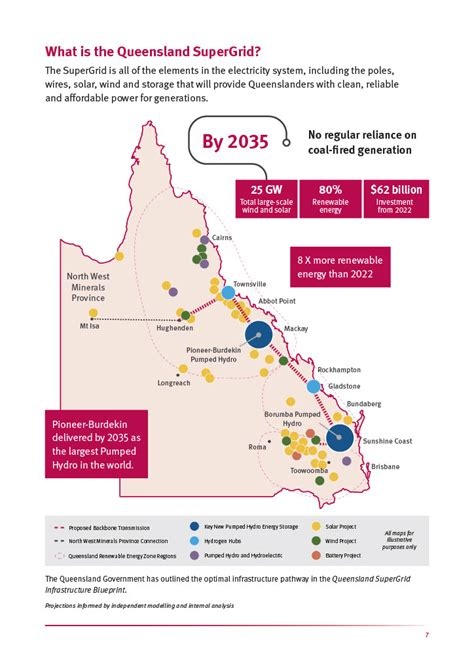
Waraba (Caboolture West) New Regional City
3,480-hectare greenfield development creating Queensland's newest regional city. Expected to accommodate 68,700 residents across 26,900 dwellings providing 17,000 jobs. Includes town centre, employment areas, schools, hospitals and residential precincts.
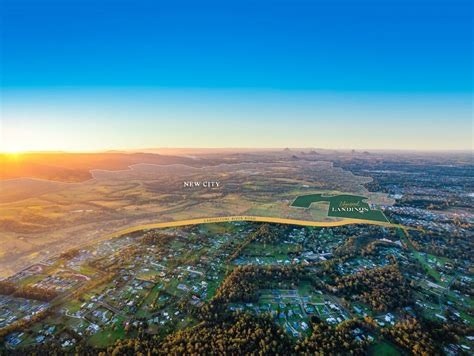
Brisbane 2032 Olympic and Paralympic Games Infrastructure Program
Comprehensive infrastructure program supporting the Brisbane 2032 Olympic and Paralympic Games, including a new 63,000-seat Olympic stadium at Victoria Park, new 25,000-seat National Aquatic Centre at Spring Hill, athlete villages at RNA Showgrounds (Brisbane), Royal Pines (Gold Coast) and Maroochydore (Sunshine Coast), venue upgrades across South East Queensland, and regional transport improvements. Total program value $7.1 billion.
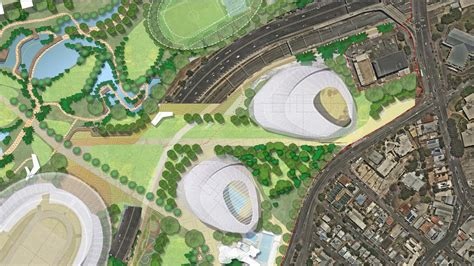
Borumba Pumped Hydro Project
A $18.4 billion pumped hydro energy storage project at Lake Borumba near Imbil, west of the Sunshine Coast. The 2,000MW project will expand Lake Borumba's storage capacity from 46 to 224 gigalitres and generate electricity for up to 24 hours. Queensland Hydro is developing the project with $190 million in major works packages already awarded. The project targets first power in 2033 and will support thousands of construction jobs.
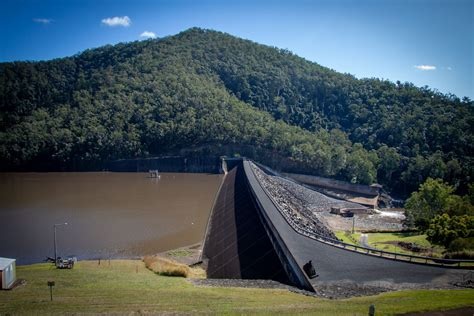
Queensland Energy and Jobs Plan - South East Queensland
State program to transform SE QLD's electricity system through new renewable generation, long duration storage (including the proposed 2,000 MW Borumba Pumped Hydro near Imbil), and SuperGrid transmission upgrades led by Powerlink. Delivery is guided by the Energy (Renewable Transformation and Jobs) Act 2024 and current government roadmapping. As at Aug 2025, Borumba is progressing through the EIS process and related transmission connections planning, while the government develops a 5 year Energy Roadmap.
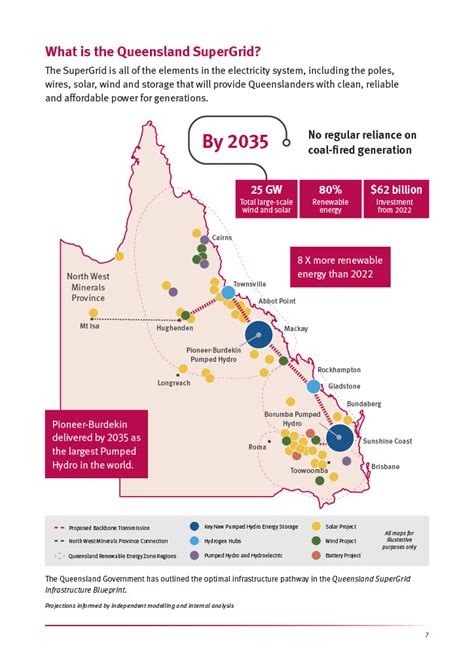
Borumba Pumped Hydro Project
A proposed 2,000 MW / 48 GWh pumped hydro energy storage system at Lake Borumba near Imbil. The project expands the existing lower reservoir (Lake Borumba) and constructs a new upper reservoir linked by underground tunnels and an underground powerhouse, with associated switchyard, roads and temporary workers camps. Early and exploratory works activities (e.g., road upgrades, workers accommodation, geotechnical and environmental surveys) are underway while main works remain subject to approvals. Draft EIS preparation is in progress with state and federal assessment pathways active. In June 2025, oversight of Queensland Hydro transferred to Queensland Investment Corporation (QIC) and a refreshed business case is being prepared, expected mid-2026. Current public guidance indicates a completion target around 2035, with the scheme able to provide up to 24 hours of storage and power approximately 2.3 million homes.
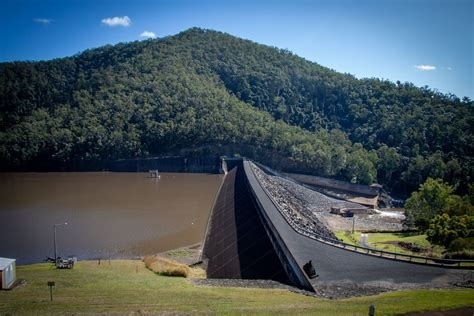
Brisbane Northern Suburbs Corridor Capacity
Program of works to increase capacity and reliability across Brisbane's northern transport corridors (north Brisbane and southern Moreton Bay). Current strands include the proposed Gympie Road Bypass Tunnel (Kedron to Carseldine) now transitioned to TMR for integrated planning, the Northern Transitway on Gympie Road to separate buses from general traffic, and options progressed through the North West Transport Network business case. The focus is on improving public transport priority, relieving Gympie Road congestion, and safeguarding future corridors to 2041 population and employment growth.
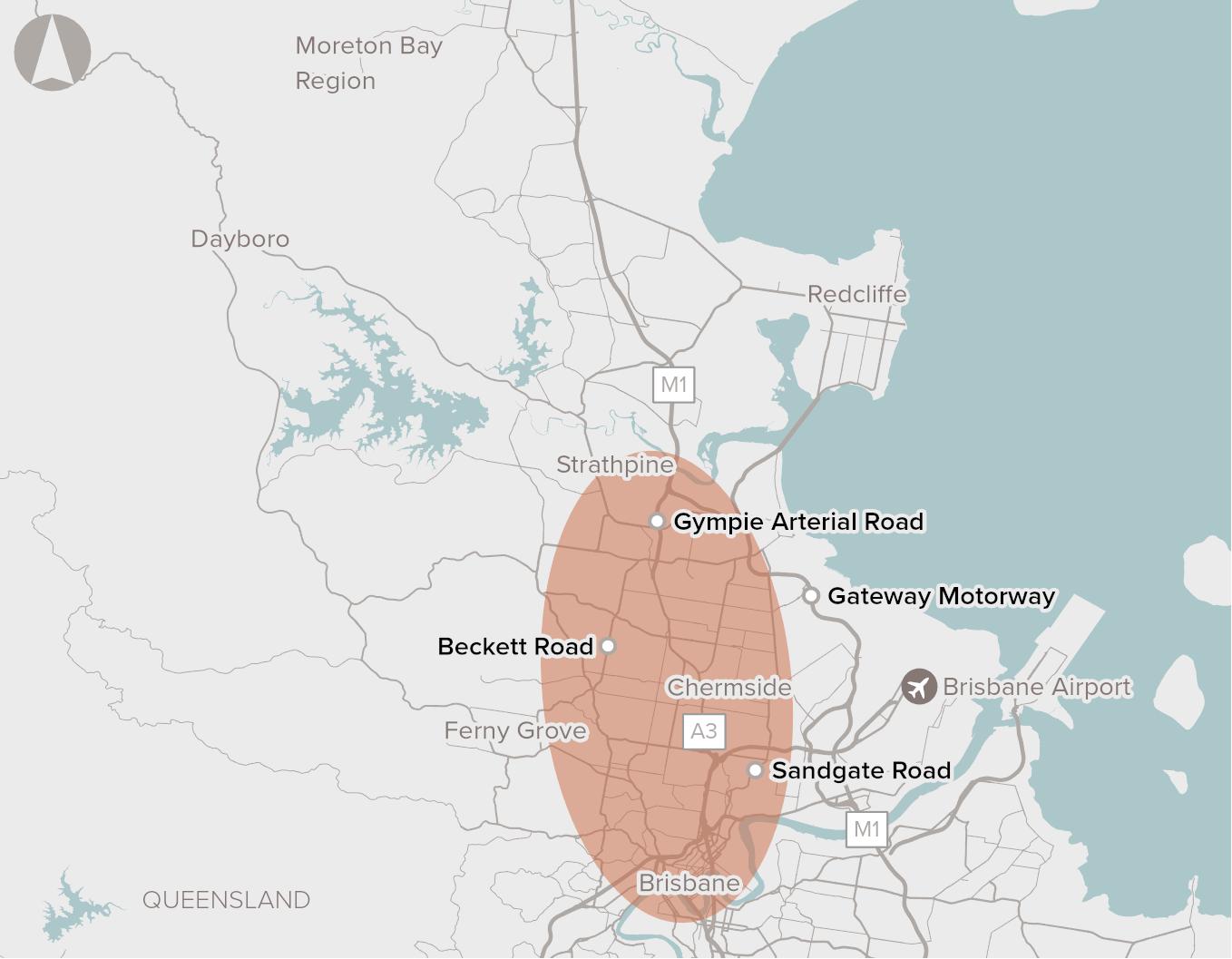
Employment
Employment performance in Kilcoy ranks among the strongest 15% of areas evaluated nationally
Kilcoy's workforce is balanced across white and blue-collar jobs. Manufacturing and industrial sectors are prominent, with an unemployment rate of 2.0% as of June 2025.
The area has seen a 10.5% employment growth in the past year. Kilcoy's unemployment rate is below Greater Brisbane's at 4.1%, but workforce participation lags at 55.5%. Leading industries include manufacturing, agriculture, forestry & fishing, and health care & social assistance. Manufacturing employment is particularly high, at 3.9 times the regional average.
Professional & technical services employ only 1.9% of local workers, below Greater Brisbane's 8.9%. Many residents commute elsewhere for work. Between June 2024 and June 2025, employment increased by 10.5%, labour force grew by 8.4%, reducing the unemployment rate by 1.9 percentage points. In comparison, Greater Brisbane recorded employment growth of 4.4% with a 0.4 percentage point reduction in unemployment. As of Sep-25, Queensland's employment contracted by 0.23%, with an unemployment rate of 4.2%. Nationally, the unemployment rate is 4.5%, and employment grew by 0.26%. Jobs and Skills Australia forecasts national employment growth of 6.6% over five years and 13.7% over ten years. Applying these projections to Kilcoy's employment mix suggests local growth of approximately 4.3% over five years and 10.6% over ten years.
Frequently Asked Questions - Employment
Income
Income levels sit below national averages according to AreaSearch assessment
Kilcoy's median taxpayer income is $47,780 and average is $55,133, based on the latest postcode level ATO data aggregated by AreaSearch for financial year 2022. This is lower than national averages. In comparison, Greater Brisbane has a median income of $55,645 and an average income of $70,520. By March 2025, estimates suggest Kilcoy's median income will be approximately $53,375 and the average $61,589, accounting for Wage Price Index growth of 11.71% since financial year 2022. According to the 2021 Census, incomes in Kilcoy fall between the 23rd and 26th percentiles nationally. The income bracket $1,500 - 2,999 is dominant, with 29.5% of residents (1,849 people). After housing costs, 85.1% of income remains, ranking at the 25th percentile nationally.
Frequently Asked Questions - Income
Housing
Kilcoy is characterized by a predominantly suburban housing profile, with above-average rates of outright home ownership
Dwelling structure in Kilcoy, as evaluated at the latest Census, comprised 97.9% houses and 2.0% other dwellings. In comparison, Brisbane metro had 97.6% houses and 2.4% other dwellings. Home ownership in Kilcoy was 41.9%, similar to Brisbane metro's figure. Mortgaged dwellings were at 36.8% and rented ones at 21.3%. The median monthly mortgage repayment in Kilcoy was $1,517, lower than the Brisbane metro average of $1,715. Median weekly rent in Kilcoy was $330, compared to Brisbane metro's $340. Nationally, Kilcoy's mortgage repayments were significantly lower than the Australian average of $1,863, while rents were substantially below the national figure of $375.
Frequently Asked Questions - Housing
Household Composition
Kilcoy has a typical household mix, with a lower-than-average median household size
Family households constitute 72.6% of all households, including 27.1% couples with children, 35.2% couples without children, and 9.9% single parent families. Non-family households account for the remaining 27.4%, with lone person households at 23.7% and group households comprising 3.6% of the total. The median household size is 2.5 people, which is smaller than the Greater Brisbane average of 2.6.
Frequently Asked Questions - Households
Local Schools & Education
Kilcoy faces educational challenges, with performance metrics placing it in the bottom quartile of areas assessed nationally
The area has educational challenges, with university qualification rates at 15.6%, significantly lower than Greater Brisbane's average of 30.5%. This presents both a challenge and an opportunity for targeted educational initiatives. Bachelor degrees are the most common at 12.3%, followed by postgraduate qualifications (1.8%) and graduate diplomas (1.5%). Trade and technical skills are prominent, with 41.0% of residents aged 15+ holding vocational credentials - advanced diplomas at 10.6% and certificates at 30.4%.
Educational participation is high, with 28.6% of residents currently enrolled in formal education, including 11.5% in primary, 10.4% in secondary, and 2.1% in tertiary education. Kilcoy's five schools have a combined enrollment of 845 students. The area has typical Australian school conditions (ICSEA: 962) with balanced educational opportunities. Education provision is balanced, with four primary and one secondary school serving distinct age groups. School capacity exceeds residential needs, with 13.7 places per 100 residents compared to the regional average of 9.7, indicating Kilcoy serves as an educational center for the broader region.
Frequently Asked Questions - Education
Schools Detail
Nearby Services & Amenities
Transport
Transport servicing is very low compared to other areas nationally based on assessment of service frequency, route connectivity and accessibility
Transport analysis shows eight active stops in Kilcoy, operated by buses. These stops are served by one route, offering 24 weekly passenger trips collectively. Transport access is rated limited, with residents typically located 7601 meters from the nearest stop.
Service frequency averages three trips per day across all routes, equating to approximately three weekly trips per individual stop.
Frequently Asked Questions - Transport
Transport Stops Detail
Health
Health performance in Kilcoy is well below average with prevalence of common health conditions notable across both younger and older age cohorts
Health data indicates significant challenges for Kilcoy with high prevalence of common health conditions across both younger and older age groups, with private health cover at approximately 48% (about 2,984 people). Nationally, this figure stands at 55.3%.
Arthritis and mental health issues are most prevalent in the area, affecting 10.3% and 7.9% of residents respectively. Conversely, 65.9% report no medical ailments, compared to 66.1% across Greater Brisbane. Kilcoy has a higher proportion of residents aged 65 and over at 23.6% (1,482 people), compared to 20.8% in Greater Brisbane.
Frequently Asked Questions - Health
Cultural Diversity
The level of cultural diversity witnessed in Kilcoy was found to be above average when compared nationally for a number of language and cultural background related metrics
Kilcoy's population shows higher cultural diversity with 21.2% born overseas and 13.2% speaking a language other than English at home. Christianity is the predominant religion in Kilcoy, accounting for 57.7%, slightly higher than Greater Brisbane's 51.2%. The top three ancestry groups are English (30.3%), Australian (29.3%), and Filipino (7.6%).
Notably, German ancestry is overrepresented at 5.6% compared to the regional average of 5.4%. Samoan ancestry is also slightly higher at 0.3%, up from the region's 0.2%. Korean ancestry stands out at 0.3%, similarly higher than the regional average of 0.2%.
Frequently Asked Questions - Diversity
Age
Kilcoy hosts an older demographic, ranking in the top quartile nationwide
The median age in Kilcoy is 44 years, significantly higher than Greater Brisbane's average of 36 years and exceeding the national average of 38 years. The age profile shows that those aged 65-74 years make up 14.0% of the population, while those aged 25-34 years constitute only 9.5%. Between 2021 and present, the proportion of people aged 75 to 84 has increased from 6.1% to 8.1%, while the percentage of those aged 5 to 14 has decreased from 12.7% to 11.1%, and the share of those aged 25 to 34 has dropped from 11.0% to 9.5%. By 2041, demographic projections indicate substantial shifts in Kilcoy's age structure. The number of people aged 75 to 84 is projected to rise by 384 individuals (76%), from 508 to 893. Notably, the combined population of those aged 65 and above will account for 60% of total population growth, reflecting Kilcoy's aging demographic trend. Conversely, the populations of those aged 0 to 4 years and 5 to 14 years are expected to decrease.
